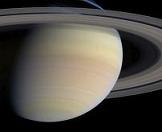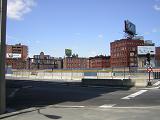Or, man am I cheesed I used the best title last time, when I first wrote about Alfonso Cuarón’s taking on the directorship of the new Harry Potter movie. Don’t let anyone tell you that …and the Prisoner of Azkaban is a kid’s film. It’s actually two films in one. One, despite everyone’s worst fears, is remarkably respectful of the book, in a way that the slavishly faithful first two films couldn’t be. One can’t respect a book when translating it into film if one doesn’t respect cinema at the same time. And the first two films, though page for page follow the first two books very closely, are so leaden-footed (and sore-ass-inducing) that they are a shambles as cinema.
The new film is actually cinema. Not only is it watchable, it’s suspenseful (I actually felt a chill down my spine when I watched Harry save himself at the end with his patronus), and in moments it approaches poetry. That’s largely due to the second film inside the first, which is an art-house hommage to the passage of time and the maturing of a lovely young girl.
Yep, HPATPOA is Hermione’s movie. Not only does it put her in her rightful place as an ass-kicking young witch who can confidently stand beside Harry and Ron; not only does it show, as Lisa said after the film, “who’s really in charge: the girl!” in the three’s friendship; it also shows her growing up. Without dwelling on it excessively, certainly without wrecking the main story, little details show her starting to deal with her feelings for her friends, especially Ron: grasping for Ron’s hand while watching Harry deal with Buckbeak, crying on his shoulder at Bucky’s apparent execution, taking in stride Sirius Black’s compliment that she is indeed the greatest witch of her age.
The few places that Cuarón lets his directorial hand show through underscore Hermione’s passage into adulthood. He indulges (thankfully for us) in some gorgeous visual poetry as the seasons change at the school and foregrounds the passing of time with the magnificent clock with the three-story pendulum and transparent face, through which Harry gazes wistfully as his friends have pivotal growing experiences without him (and don’t imagine that the trips to Hogsmeade are anything but pivotal growth experiences, even if they have little to do with the story and nothing to do with classrooms. Where else can the kids learn how to live on their own without the adults?).
Harry, of course, is already alone without adults, having lost his parents (which this movie dwells on far more than the first two), and time moves differently for him. Witness his lessons in invoking the patronus, in the middle of a giant orrery that maps the movement of the planets, or his glimpse of the wheeling galaxies as he learns he’s in (apparent) danger.
But back to Hermione. The brilliant bit that Cuarón teases out of J K Rowling’s book is that Hermione is the key to the story. As she fishes the time turner out of the front of her sweater (there’s that subtext again!), she literally takes time in her own hands in a profoundly creative act that puts time aside. It’s the only place where the momentum of the movie pauses for a bit, as key pieces of the action happen again. But it’s also a place where Cuarón can give Hermione and Harry some peaceful time alone together. And it feels ultimately like a sweet breath in the middle of the building tension.
Good on you, Hermione. I think the boys will have a lot of growing up to do to catch up with you.


